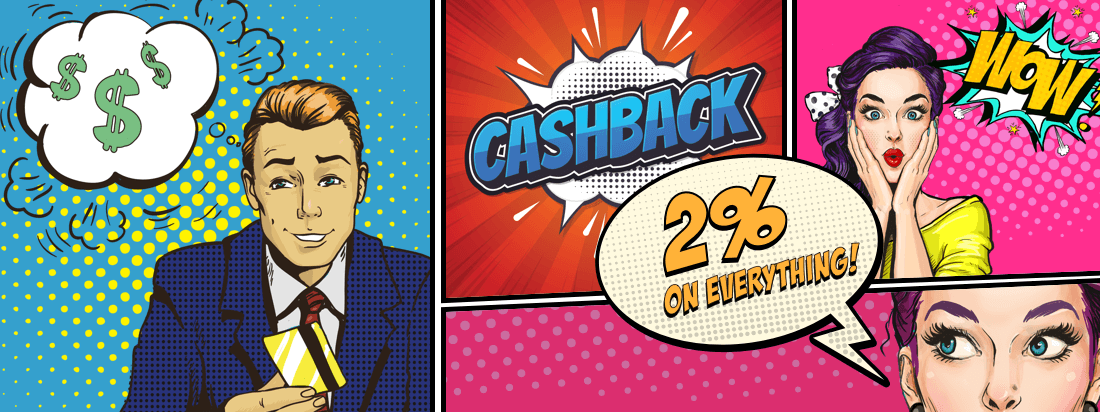
Credit cards come in a variety of shapes and sizes, but the best ones offer 2 percent cash back on all purchases. They’re easy to use and rewarding, earning a bonus for every purchase you make. It’s hard to beat a double cash card.
There are some cards that offer even bigger bonuses, but only for specific types of purchases. If you have one of those
Best 2 Percent Cash Back Credit Cards
The number one thing to consider when looking for a new cashback card is how much you’re going to earn. If it’s a fixed-rate card, what rate of return does it offer?
There are a number of cards that’ll give you 1.5 percent back on all your purchases, but you really want to earn 2 percent. There are even a few cards that earn more.
Best Rotating Category Credit Cards
If you’re considering a card that offers a higher rate of return in rotating categories, then you’ll want to think a little more about your spending habits. The bonus categories for these types of cards can change every year, but they’re usually fairly consistent.
That means you should look for a card that typically offers at least 5 percent back for the types of purchases you often make. If, for instance, you never shop at wholesale clubs like Costco and Sam’s Club, you’ll probably want to skip a card that often features that as a bonus category.
Why Cashback Credit Cards?
With all the credit cards on the market, you may be wondering why you should go with a cashback card. You could get a travel card that earns free airfare, a store card that offers bonus points in a loyalty program or even a card that’ll give you interest-free financing for a fixed period of time. Heck, there are even cards that feature pro sports teams.
But everyone could use a little extra money in their pockets, and that’s what you get with a cashback card. Every purchase you make earns cash that can be used for anything you want. It’s that simple.
You don’t have to worry about travel partners, transferring points, rewards programs,
Double Cash Is King
Once you decide to get a cashback card, you’ll have to figure out what kind you want. There are fixed-rate cards, cards with rotating categories and cards that offer bonuses for specific types of purchases.
Fixed-rate cards have a place in any wallet, and those that earn 2 percent cash back are the best. They’re great for everyone from rewards card novices to travel hacking experts because it’s easy to maximize your return. Every purchase you make earns a bonus.
Cashback Credit Cards with Rotating Categories
Cards with rotating categories can earn more, but only for specific types of purchases. With these cards, you’ll get 5 percent back for purchases that fall into certain categories.
The categories will change every four months and often differ a bit from year to year. You’ll never know exactly what purchases will get a bonus until the categories are announced. They usually include popular retailers, though, such as gas stations, restaurants, wholesale clubs

These cards usually have a cap on the total amount of spending that earns the bonus. All spending that goes beyond that limit, as well as spending that does not fall into the bonus categories, earns at a rate of just 1 percent back. That’s not great, which is why it’s smart to supplement a rotating category card with a fixed-rate card.
Cashback Credit Cards with Fixed Categories
The final type of cashback card offers a bonus for certain purchase categories that do not change. These cards are designed for individuals with specific spending habits.
There are, for example, cards for foodies, like the Uber Visa Credit Card or Capital One Savor. It offers a bonus for dining out, online shopping and at grocery stores. There are also cards for small business owners, frequent travelers and more.
If it fits your lifestyle, these cards can be great for earning a little extra cash back. They typically offer up to 4 percent back in bonus categories. However, like the rotating category cards, you’ll be stuck with just 1 percent back for a lot of purchases. Again, you’ll probably want to supplement one of these cards with a good fixed-rate card.
Should You Pay for More than 2 Percent?
Some cards will give you a little extra if you’re willing to pay an annual fee. In the world of fixed-rate cards, you won’t do any better than 2 percent cash back with a no-fee card.
If you are willing to pay for a card, that can go up to 2.5 or 3 percent back. You have to be sure that you’ll spend enough to cover the annual fee, though.
The Alliant Cashback Visa Signature, for example, offers 3 percent back the first year and 2.5 percent after that. It also has a $59 annual fee, which is waived for the first year.
In order to come out ahead with this card, you’ll have to spend at least $11,800 annually after the first year. If you don’t think you’ll do that, look for a no-fee card offering 2 percent back.
Welcome Bonuses for Double Cash Credit Cards
Double cash cards don’t typically come with
If you want a quick cash bonus, then you’ll need to look elsewhere. Many cards that offer a fixed 1.5 percent rate of return offer a bonus after meeting a minimum spending requirement.
The bonuses are typically in the range of $100 to $150, though they sometimes go up as high as $200 during special promotional periods. The Chase Freedom Unlimited, for example, gives new cardholders $150 if they spend $500 within three months of account opening.
Can You Get Interest-Free Financing and 2 Percent Cash Back?
Whether it’s a double cashback card or any other credit card, there’s one more potentially valuable benefit you should think about before you start applying. That’s interest-free financing. There are a lot of cards that offer 0% APR for a limited time on balance transfers, purchases or both.
Interest-free promotional financing is a great perk, but it’s hard to find with 2 percent
If you want 0% APR on purchases, you’ll have to look at cards with 1.5 percent back, such as the Freedom Unlimited or the Wells Fargo Cash Wise Visa. That might save you some money in the short term, but you’ll probably find that earning double cash back can be a lot more lucrative in the long run.
With a card that offers 0% on purchases, you can buy a big ticket item, like a new appliance, and pay it off over time without being charged extra for financing.
Getting
